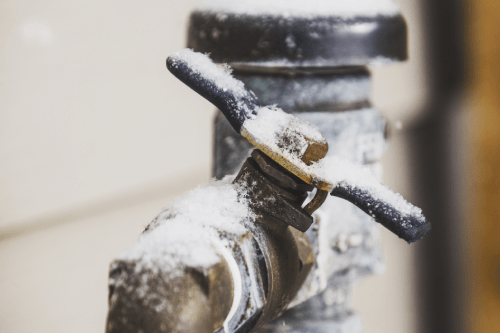Tips to Defend Plumbing System from Cold Weather: Essential Tips
Tips to Defend Plumbing System from Cold Weather: Essential Tips
Blog Article
Have you been trying to find facts and techniques involving How to Prevent Your Pipes From Freezing?

Winter can ruin your pipes, specifically by freezing pipelines. Right here's exactly how to avoid it from occurring and what to do if it does.
Introduction
As temperatures drop, the threat of icy pipes increases, possibly causing expensive repairs and water damages. Comprehending how to stop icy pipes is critical for house owners in cold environments.
Understanding Icy Pipes
What creates pipes to ice up?
Pipelines freeze when revealed to temperatures listed below 32 ° F (0 ° C) for extended periods. As water inside the pipelines freezes, it broadens, taxing the pipe wall surfaces and potentially causing them to break.
Risks and damages
Icy pipelines can bring about water system disruptions, residential or commercial property damage, and expensive repairs. Burst pipelines can flood homes and trigger extensive structural damage.
Signs of Frozen Pipes
Identifying frozen pipelines early can stop them from breaking.
Just how to determine frozen pipes
Look for lowered water circulation from faucets, unusual smells or sounds from pipes, and visible frost on revealed pipes.
Prevention Tips
Shielding prone pipes
Cover pipes in insulation sleeves or make use of warm tape to protect them from freezing temperature levels. Focus on pipelines in unheated or outside locations of the home.
Heating strategies
Keep indoor spaces adequately heated up, specifically areas with pipes. Open cabinet doors to allow cozy air to circulate around pipelines under sinks.
Protecting Exterior Plumbing
Garden tubes and outdoor taps
Disconnect and drain yard hoses before winter months. Install frost-proof spigots or cover outside faucets with insulated caps.
What to Do If Your Pipelines Freeze
Immediate actions to take
If you suspect icy pipelines, maintain taps open to relieve pressure as the ice thaws. Make use of a hairdryer or towels soaked in hot water to thaw pipes gradually.
Long-Term Solutions
Architectural adjustments
Think about rerouting pipelines far from outside wall surfaces or unheated areas. Add added insulation to attic rooms, basements, and crawl spaces.
Updating insulation
Purchase premium insulation for pipes, attic rooms, and walls. Correct insulation assists maintain regular temperatures and lowers the danger of icy pipes.
Verdict
Stopping icy pipes calls for proactive procedures and fast reactions. By recognizing the causes, indications, and safety nets, homeowners can safeguard their pipes throughout winter.
5 Ways to Prevent Frozen Pipes
Drain Outdoor Faucets and Disconnect Hoses
First, close the shut-off valve that controls the flow of water in the pipe to your outdoor faucet. Then, head outside to disconnect and drain your hose and open the outdoor faucet to allow the water to completely drain out of the line. Turn off the faucet when done. Finally, head back to the shut-off valve and drain the remaining water inside the pipe into a bucket or container. Additionally, if you have a home irrigation system, you should consider hiring an expert to clear the system of water each year.
Insulate Pipes
One of the best and most cost-effective methods for preventing frozen water pipes is to wrap your pipes with insulation. This is especially important for areas in your home that aren’t exposed to heat, such as an attic. We suggest using foam sleeves, which can typically be found at your local hardware store.
Keep Heat Running at 65
Your pipes are located inside your walls, and the temperature there is much colder than the rest of the house. To prevent your pipes from freezing, The Insurance Information Institute suggests that you keep your home heated to at least 65 degrees, even when traveling. You may want to invest in smart devices that can keep an eye on the temperature in your home while you’re away.
Leave Water Dripping
Moving water — even a small trickle — can prevent ice from forming inside your pipes. When freezing temps are imminent, start a drip of water from all faucets that serve exposed pipes. Leaving a few faucets running will also help relieve pressure inside the pipes and help prevent a rupture if the water inside freezes.
Open Cupboard Doors
Warm your kitchen and bathroom pipes by opening cupboards and vanities. You should also leave your interior doors ajar to help warm air circulate evenly throughout your home.

Do you enjoy reading up on Helpful Tips to Prevent Frozen Pipes this Winter? Put a remark further down. We will be delighted to find out your suggestions about this write up. We are looking forward that you visit us again later on. Feel free to pause to distribute this content if you appreciated it. Thanks so much for going through it.
Check It Out Report this page